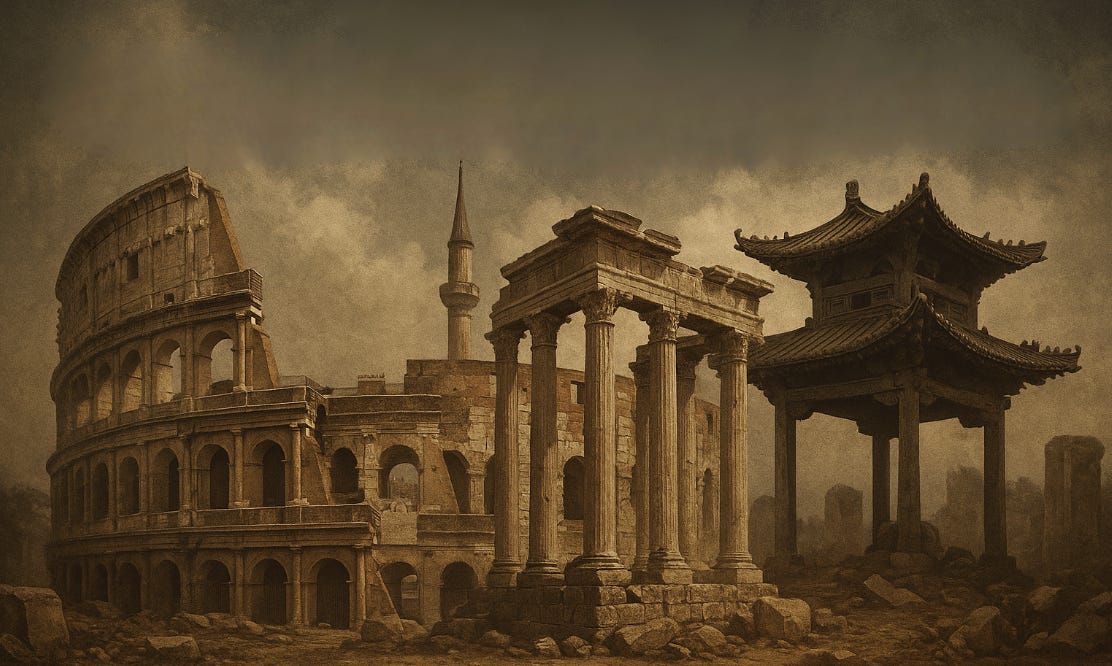CORE BRIEF: Why Government Fails
Why Governments Fail
All four empires we reviewed this week, Rome, the Ottoman Empire, the British Empire, and the Qing Dynasty, collapsed for the same structural reasons. Their governments stopped adapting while the world around them changed. Their economies weakened. Their ability to manage large systems declined. Each state reached a point where its political structures could no longer support its size, obligations, or competition.
These failures happened because leaders ignored warning signs and refused to embrace progress, to move forward. They were the predictable result of governments that delayed reform, resisted progress, concentrated power in a small group, and ignored the warning signs that their systems were breaking down.
The United States shows the same pressure today. Infrastructure is aging. Institutions are gridlocked. Congress cannot pass long-term plans. National debt keeps rising. Competitors keep advancing while the United States is not only moving forward, but actively moving backward. The structural conditions that destroyed older empires are visible now in the modern American system.


